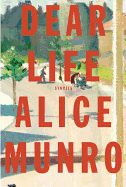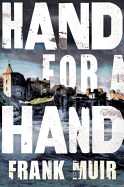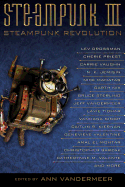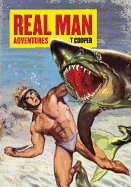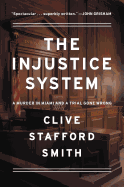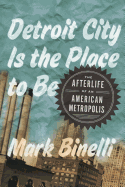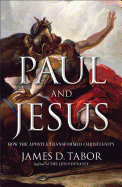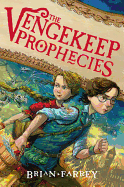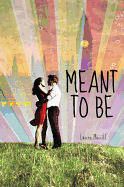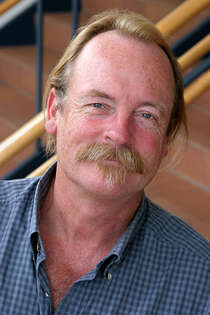 Bill Roorbach is the author of eight books of fiction and nonfiction, including Big Bend, which won the Flannery O'Connor Prize and the O. Henry Prize. His new novel, Life Among Giants, was just published by Algonquin. The 10th anniversary edition of his craft book, Writing Life Stories, is used in writing programs around the world. Recently, Roorbach was a judge on Food Network All Star Challenge, evaluating incredible Life Stories cakes made under the gun. A video memoir about his tragic music career and a blog on writers and writing and just about everything else (with author David Gessner) is online at Bill and Dave's Cocktail Hour.
Bill Roorbach is the author of eight books of fiction and nonfiction, including Big Bend, which won the Flannery O'Connor Prize and the O. Henry Prize. His new novel, Life Among Giants, was just published by Algonquin. The 10th anniversary edition of his craft book, Writing Life Stories, is used in writing programs around the world. Recently, Roorbach was a judge on Food Network All Star Challenge, evaluating incredible Life Stories cakes made under the gun. A video memoir about his tragic music career and a blog on writers and writing and just about everything else (with author David Gessner) is online at Bill and Dave's Cocktail Hour.
Your publisher compares your main character, David "Lizard" Hochmeyer, with Rabbit Angstrom, Garp and Frank Bascombe. Do you see your novel as part of that tradition--Updike, Irving, Ford?
Oh, man. I do hope so. Those are all writers I admire and books I've read with great interest and attention. And I definitely see elements from all three protagonists in Lizard. But those weren't my conscious influences, though Lizard is an athlete, a positive thinker and exuberantly alive despite his troubles, like all of the above. I was thinking of non-athlete Nick Carraway from the start, however, the genial narrator of The Great Gatsby, a regular fellow who's looking in on a rarefied world from the outside, only slowly to realize he's gotten his life tangled up in the lives of mythic beings and can't get untangled. Lizard's warmer than Carraway, and invested by more than love, though love is a big draw and one of the engines of the book. There's a world-famous ballerina living in the enormous mansion across the way from his modest house, and one day this valiant young man decides he's going to rescue her. It doesn't go as planned, not at all, but I don't think he'll ever regret it.
Where does David's nickname, Lizard, come from?
There's this young woman at Lizard's school--he's 17 as the novel opens--an artsy and aloof girl named Emily Bright. She's the daughter of an African-American sergeant and a powerhouse of a Korean woman. She has nothing but contempt for David's football stardom (but that might be a crush) and writes a scathing editorial for the school paper, calling him a reptile. The other guys on the team find it hilarious and start calling him Lizard. But he's more sensitive than she thinks, and takes Emily's criticism to heart--he's not impressed with his own powers, not at all, he's started to question his All-American status, his shallow All-American values. He wants to enter other worlds. And Emily's world has always interested him. Also Emily herself.
Where did the character of Lizard come from?
Lizard walked into my studio one day (he had to duck to get in the door) and I found him very appealing and asked him to stay and tell his story. It took years to get it all out. A very likable guy, very deep, size 16 shoes.
Lizard plays quarterback for his high school, then Princeton, then the Miami Dolphins. Lizard's sister plays tennis quite well. Why the sports focus?
Sports aren't a new subject for me. The protagonist of my first novel, The Smallest Color, was a downhill skier of some success, ending as an assistant coach for the US Olympic team. But not as cheerful as Lizard, and less driven, more haunted, full of secrets. Lizard's more open. I don't know why the focus on sports here. I just think it's a grand metaphor. I mean, it's Lizard's story, and Lizard's an athlete: it's not my fault! For my part, I was good but not stellar at sports, better at music and nature appreciation and smoking in the boy's room. My brother was a star at multiple sports, a coach's dream. I looked up to him. Still do. My mother always said that because he'd taken that slot in the town firmament, I had to find my own niche and chose to be a beatnik. Of course the beatniks were already gone. Still, I liked Mom's thinking, may she rest in peace, and proceeded to fulfill my destiny. Jimmy Hendrix, Van Morrison, Joni Mitchell, Jerry Garcia, Janis Joplin, those were my heroes. Ginger Baker (of the band Cream) makes an appearance in Life Among Giants, along with other rockers both real and fictional. Lizard is more careful than I was, but still, he wants to cross over from the world of sports to the worlds of art. He exemplifies the same kind of ambivalence that has always lived in me. Of course, he's almost seven feet tall and a world-class quarterback, so his ambivalence is put to the test. And he gets to hang out with the real giants of both worlds--ballet stars, rockers, the Princeton Tigers, the Miami Dolphins.
 In the novel we come across phrases like "I'll get to that," "But more about that later," or "That's a story for another time." All these create a sort of stylistic mantra. How hard was it to maintain the back and forth structure of the novel?
In the novel we come across phrases like "I'll get to that," "But more about that later," or "That's a story for another time." All these create a sort of stylistic mantra. How hard was it to maintain the back and forth structure of the novel?
I don't use outlines, but rather find the story as I'm making it, just watching those characters closely, and listening to Lizard. You write a lot of extra pages doing that. In fact, one of the chores I put my editor (Kathy Pories of Algonquin) through was cutting back an original manuscript of more than 600 pages. Probably I wrote 1,000 manuscript pages to get to the 450 or so we ended up with. Her very smart approach was to eliminate a certain character and that character's complex storyline. The cut solved a number of problems, particularly of chronology.
Is chronology important?
Time is the most interesting thing about making fiction. Lizard speaks from now about several layers of time, pasts recent and distant and in between, and these layers fold in on one another, overlap as they might in memory. I managed that chronology more and more closely with each draft. The object was to reveal story elements past and present in just the most dramatic places while keeping things crystal clear. At least keeping the things clear that you want to be clear--I believe in leaving a little uncertainty both for characters and the reader, while leaving enough clues that the reader can make confident guesses about what's going on, sometimes confirmed, more often confounded.
I'm not giving anything away to say that David's parents are killed early on in the novel; he sees them shot, and this trauma dictates much of the rest of his life. Did you see this trauma as a key thread to hold your many stories together?
Lizard's parents are killed? Oh my god! That's terrible... I'm sure it affects every aspect of his life after forever after, makes him ponder the past. How could it not? And I'll bet it complicates his relationship with his sister immeasurably.
Did you draw on Bournonville's ballet La Sylphide as you were working? How does it relate to your own character, the world-class ballet dancer Sylphide?
Hold your mouth French and say it: Sill-Feeeeeed. Yes, the story of that ballet, which is discussed in the novel, does give a kind of framework to think about when reading this novel: a young man who, having fallen in love with a sylph, a kind of fairy creature, attempts to cross into her world, not a great idea. But fun to watch onstage, all those incredible dancers.
At its heart, Life Among Giants is primarily a family saga. Did you see it as such early on?
It's the story of two families living across a pond and many acres of manicured lawn away from one another. Lizard's family is struggling and heading for disaster. Meanwhile, the famous and inutterably talented and wealthy folks in the enormous stone mansion across the way are only getting richer. Lizard's sister sees a way out over there, but when she crosses the pond, fate is unleashed--at least that's how it seems to Lizard--and the intertwining of the two families begins. I saw it as a love story early on. The families developed character by character, and populated the lovers' lives, crossed their stars.
Where did the title come from?
That was tough. My working title, which I agree is not great, was The High Side, which is the name of the mansion in the book. I knew and everyone knew we'd change it at some point, but the title just didn't come and didn't come. Stories, I come up with perfect titles while I'm writing. But that's because stories are contained, simple, small. A novel, especially this novel, covers a lot more territory, both literal and emotional, and contains dozens of lives. For a while I liked the title My Dancer, but the story grew way past that relationship. Later, I thought of Children of War, and while that spoke to all different kinds of damage to various characters, it didn't catch the exuberant tone of Lizard's narration. Late in the process--the book already copyedited--the idea of giants came to mind--Lizard is so tall, for one thing. But he's not the giant I was thinking of. It's those people across the way that are so big--and even as imposing as he is, he must be careful not to get stepped on. I made a list of titles with the word giant in them, and eventually one of them stood out, and then towered.
Your publisher, Algonquin, has put together a very aggressive author tour and marketing effort for your novel. How do you feel about this?
I'm very grateful and feel very lucky. These are smart people and dazzlingly good at what they do, from editing to marketing to publishing to packaging to positioning to publicizing and promoting. But more important, they are people who love to read and love to get behind a book they enjoyed reading. And I've had the best conversations about not only my book but literature in general with all of them. They are business people who love to read, very smart readers who want to share what they love, and have the skills to do it. I'm looking forward to going around the country and meeting readers, making friends. You can find my events schedule on my website.
What are you working on now?
I'm in a new novel and always have stories going. I've also gotten interested in filmmaking, which I suspect will remain a hobby. I'm a blogger, too, something I never would have imagined just a few years ago, but it's a satisfying way to connect with readers instantaneously, sometimes for the better, sometimes for the worse! It's also a great way to connect with my readers directly, always important to me. Nothing I love better than an e-mail from someone who's just found my book and been kept up all night. (Sorry about that!) I've always written nonfiction, as well, mostly about nature, several books' worth, and will continue that, I'm sure. But fiction remains my first love, and storytelling my daily bread. --Tom Lavoie
Bill Roorbach: 'Storytelling My Daily Bread'
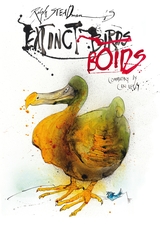 Steadman's paintings include true extinct avians like the Lanai Hookbill, mixed with imaginary birds like the Blackened Thront, which "looks like how we have all felt on certain mornings in our lives. Pretty damn shabby."
Steadman's paintings include true extinct avians like the Lanai Hookbill, mixed with imaginary birds like the Blackened Thront, which "looks like how we have all felt on certain mornings in our lives. Pretty damn shabby."


 Bill Roorbach
Bill Roorbach In the novel we come across phrases like "I'll get to that," "But more about that later," or "That's a story for another time." All these create a sort of stylistic mantra. How hard was it to maintain the back and forth structure of the novel?
In the novel we come across phrases like "I'll get to that," "But more about that later," or "That's a story for another time." All these create a sort of stylistic mantra. How hard was it to maintain the back and forth structure of the novel?  Kristina Wright
Kristina Wright